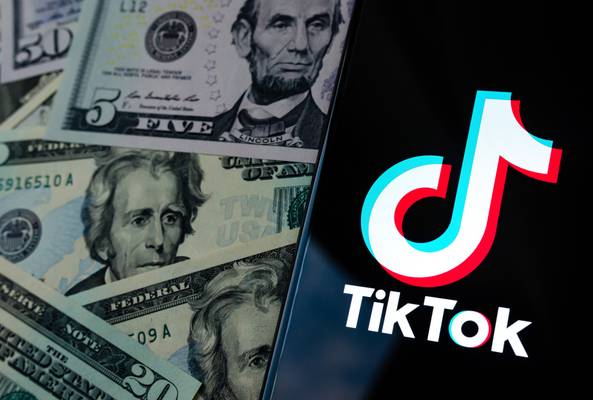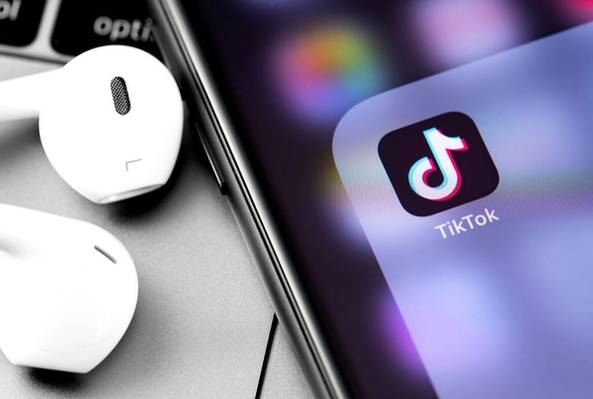vidIQ is your guide for YouTube growth through video insights, channel stats, and creator coaching.
YouTube vs. TikTok: Which One Is Best for Video Creators?

It’s the big dilemma among video creators: Is it better if I post on YouTube or TikTok?
YouTube has been a staple among video creators since its inception in 2005, but it’s no longer the only platform creators can leverage.
TikTok burst onto the scene in 2016, merged with Musical.ly in 2017, and by 2018, was one of the most downloaded apps in the U.S. However, as more creators flock to the app, some question whether to focus on YouTube, TikTok, or both.
But a choice between YouTube or TikTok shouldn’t be a snap decision. Instead, consider a myriad of factors, from the culture of each platform to the monetization and audience-building opportunities.
Today we’ll compare YouTube and TikTok to help you understand more about:
- Monetization programs available on YouTube and TikTok
- How YouTube and TikTok’s audiences differ
- Which one is best for different types of video creators
What’s the Difference Between YouTube and TikTok?
YouTube is a video-sharing platform. Owned by Google, this video powerhouse enables creators to upload and share videos, build a loyal following, and monetize content through ads and other opportunities.
YouTube boasts 1.7 billion unique monthly visitors as of 2022, with 62% of users consuming content on the website daily. Due to the structure of the website, long-form videos are the norm. In 2018, the average length of a YouTube video was 11.7 minutes long. The platform also hosts various internal products, including YouTube Music, YouTube TV, YouTube Premium, and more.
Creators on YouTube have a wealth of tools, including in-depth analytics, branded channels, content types, and useful features, such as a copyright-free audio library.
TikTok, on the other hand, prioritizes short-form content. Creators upload videos that often feature catchy music, which they share with their followers and the TikTok community at large. Then the algorithm shares videos from millions of creators on a user’s For You page.
Similar to YouTube, TikTok creators have various tools at their disposal for monetizing videos and building a community. These tools can be found in TikTok’s Creator Next portal.
Let’s take a look at which app is better for specific creator goals, such as:
- Content monetization
- Generating views
- Reaching a target audience
- Creating short-form vs. long-form videos
- Building a loyal, active community
Monetization on YouTube vs. TikTok
Both platforms allow creators to monetize their content. In addition to external brand deals, creators can leverage specific tools to generate additional income from their channels.
YouTube Monetization
YouTube’s monetization features are available as part of the YouTube Partner Program. This program is only available to creators whose content follows YouTube’s strict monetization policies, which include meeting advertiser-friendly guidelines.
Creators wanting access to the Partner Program have to do other things too, like open a Google AdSense account, have 1,000 subscribers, and 4,000 hours of watch time on their channel in the last 12 months.
Once accepted into the program, creators have access to numerous monetization options, including:
- Advertising revenue — Creators earn a percentage of the advertising revenue generated from the clicks on ads displayed before, after, or during their content.
- Channel Memberships — Generates monthly recurring revenue by selling exclusive content to subscribers.
- YouTube Premium — If a YouTube Premium subscriber watches a creator’s content, the creator will receive part of that subscriber’s monthly fee.
- YouTube Shorts Fund — This fund is worth $100 million and pays successful Shorts creators a monthly bonus for their hard work.
- Merch Shelf — Sales of branded channel merchandise from your channel profile and watch pages.
- Super Chats, Stickers, & Thanks — Super Chats and Stickers allows fans to pay for messages to be highlighted in live chat streams (as well as animations). Super Thanks are monetary tips viewers send to creators when watching their regular videos.
TikTok Monetization
TikTok offers different monetization avenues within its Creator Next program. Similar to YouTube, this program is application based. Creators must be at least 18, have 1,000 views in the last month, meet TikTok’s community guidelines, reach a minimum number of views and followers (it varies by region), and have posted three times in the last 30 days.
If accepted into the program, creators gain access to these monetization tools:
- TikTok Creator Fund — Since August 2020, the TikTok Creator Fund has pledged to pay creators in the USA upwards of $1 billion by August 2023. This program encourages creators to develop and share innovative content while fostering a community of followers.
- TikTok Creator Marketplace — This unique tool helps brands partners with the right influencers and creators for various campaign initiatives while also providing monetization opportunities for creators.
- Video Gifts — Allows viewers to send appreciation for content in the form of “Diamonds.” Creators collect these Diamonds and redeem them for monetary compensation.
- Live Gifts — Similar to Video Gifts, these Diamond rewards are earned through live streams on TikTok and redeemed at a later date for money.
- Tips — Just as you’d tip a waiter, TikTok viewers can send a tip to content creators.
Can You Make More Money on YouTube or TikTok?
Given the structure of each platform’s monetization efforts, creators can make more money by focusing on YouTube. This is because TikTok’s Creator Fund is a large sum of money divided between creators, while those on YouTube make money based on the direct results of their channel.
Monthly Users on YouTube vs. TikTok
The term “monthly users” refers to the number of users actively visiting and engaging with a social media app. Therefore, knowing which platform has more monthly users is an insightful piece of data to have when choosing between YouTube and TikTok.
YouTube has over 2 billion monthly users, while TikTok has over 1 billion.
For a larger audience, opt for YouTube.
Viewer Demographics on YouTube vs. TikTok
Another critical aspect of each platform is the audience demographics. If your content is geared toward a particular target audience, you’ll want to know which platform they prefer.
The majority of YouTube’s audience is in the range of 18-45 years old, catering to more of a broader audience group. While TikTok’s demographics skew toward females and a younger generation, it’s important to note that no one specific demographic group named TikTok as its favorite app, according to Hootsuite’s 2022 report.
As for user demographics, there’s no clear winner between YouTube and TikTok. It all depends on the content you intend to create and whether your audience can be found on either platform.
Video Length on YouTube vs. TikTok
YouTube caters to long-form content, while TikTok only allows short-form videos.
On YouTube, creators can upload videos up to 12 hours long. On TikTok, the maximum video length is 10 minutes. However, a quick scroll through TikTok reveals most videos don’t approach that limit — not even close. For now, short-form videos are still the app’s main draw.
When deciding between YouTube and TikTok, consider if a long-form video is best for you or if you can get your message across in a few minutes.
Video Watch Time on YouTube vs. TikTok
Watch time is a metric tracked by both YouTube and TikTok to determine the average amount of time users watch a creator’s content. So naturally, the greater the watch time, the more engaged viewers are.
Given the shorter nature of videos on TikTok, one might think it’s easier to have a higher watch time average. But, in fact, it’s harder. The quick nature of these videos means a creator’s content must be eye-catching from the start, whereas YouTube allows for longer storytelling.
The storytelling nature of YouTube also helps creators spend more time connecting with their audience.
Building a Community on YouTube vs. TikTok
A creator’s success on YouTube or TikTok depends on their ability to build a community. Each platform offers various ways to do it.
Both platforms provide ways for creators to interact with their viewers — commenting, live streams, interactive buttons, and more. But these tools don’t innately build an audience; a creator’s ability to create content and conversations that resonate with a community does.
Building a community on YouTube or TikTok may look different from a technological perspective, but the same principles apply — create unique content and make it authentic.
Should You Start a YouTube Channel or TikTok Account?
If you want to create long-form content with greater opportunities for monetization, a YouTube account is the way to go. On the other hand, if you prefer short-form videos and have a younger audience demographic, give TikTok a try.


